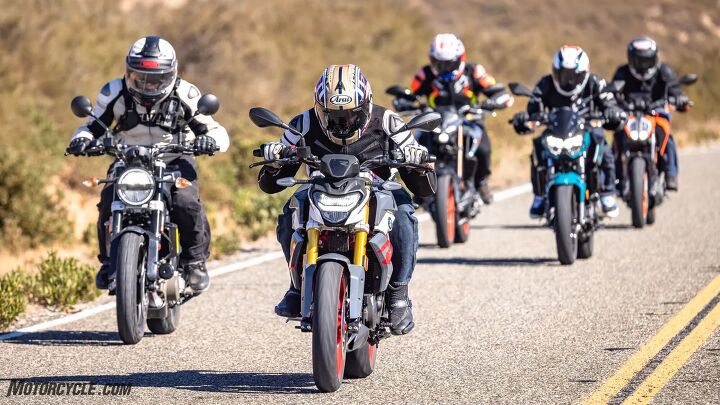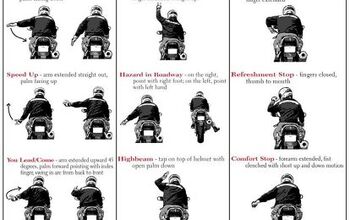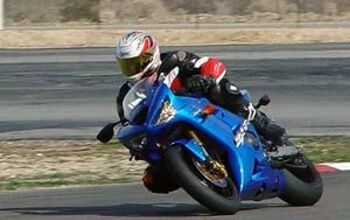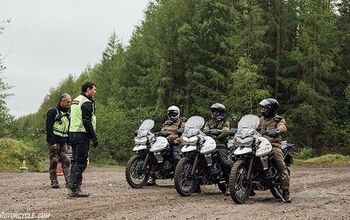Riding in a Group

Group rides can be a gas, but only if everyone gels.
What was that classic grandparents’ advice, “Pick your friends wisely?” The same goes for riding in a group. Imagine, if you will, the last lap of the Daytona 500 with the entire field packed together at nearly 200 mph. Or the peloton rushing along some winding backroad in the Tour de France. One wrong move and it’s mayhem for everyone. These are extreme examples of chain reactions in a pack of moving vehicles, but to some extent, that is the risk for motorcyclists riding in a group. And it’s exactly why you should, as the grandparents warned, pick your riding partners wisely.
Traveling in a group is fun. It’s a shared experience that becomes a bond that will be remembered indefinitely, especially if you’re all headed somewhere new to see and learn together. That said, as the racing examples above illustrate, risks do exist, and therefore safety must trump the experiential part of your journey. Here are some techniques we’ve integrated into group riding.
Motorcycle.com thanks Yamaha for sponsoring this new rider series.
Choose a Leader
If you’re riding with a group of friends, have a discussion beforehand and select a good, experienced rider to set the speed and the tone for your trip. A good leader will choose a safe speed for conditions, ride smoothly and consistently, make safe passing moves (see below), keep a rearward eye on the group, and provide ample notice when changing lanes, merging, or switching roads, exiting the route for fuel or food, or stopping.
Staggered Formation
Instead of riding in a direct line, i.e., nose to tail, adopt staggered formation. That leaves an extra bike length of space between you and both the rider ahead and the rider behind. A helpful tip here: Once your group has established a staggered formation, where practical, maintain your position in the formation. By adjusting positions, you can start a ripple effect that makes others change their position too.
Ride as a Team
Since one mistake or miscue can mess up the entire group, every rider should have their act together before heading out. That means your rest-stop needs are met, your helmet strap is tight, your gloves are on, and your phone and water bottle are stored before the leader fires up their engine. As they say, “Don’t be that guy” who delays the group. To avoid doing this, consider your own punctuality and professionalism as a gift to your fellow riders.
Leave Extra Room
If Daytona 500 drivers and Tour de France peloton riders had larger gaps in the pack, the occasional multi-vehicle pileups might not happen. For motorcyclists then, at higher velocities on the highway, more space buys more time to avoid trouble ahead of or within the pack.
Make Sure You Can See
Regardless of whether you’re riding in organized formation or more loosely tooling along as a group, try to position yourself so you can see ahead. Particularly in a group of bikes, which often ride close together, optimizing your field of view is essential for active safety. And when you feel safe on your bike, you’ll have a better experience.
Keep the Speed Sane
From 30 mph, a good motorcycle and rider can stop in less than 30 ft. But braking from 60 mph will take the same bike and pilot closer to 120 ft. – roughly four times as far. So, as you can see, even with top equipment and skills, the higher the speed, the more space is needed to not simply to stop, but also to brake, swerve, and avoid trouble. If you’ve taken a DMV written test, you probably already know to extend the following distance as speed increases. Same goes in a group.
Smooth Inputs
Unintentional though it might be, a sudden maneuver within a tight group of riders can cause chaos behind the person who started it. So, keep your act together while group riding; ride smoothly, and make smooth throttle and brake inputs, too. If everyone practices this, it will help keep the group flowing extremely well.
Passing Strategy
Passing protocols are important when encountering slower traffic, particularly on 2-lane roads. (We probably don’t need to mention that passing is legal where the lanes are separated by broken – aka dotted or dashed – lines, right?) In general, the larger the group of riders, the slimmer the odds that everyone will be able to pass a slower vehicle or a knot of slow vehicles at once. In this case, the leader should pass first and proceed ahead, with the rest of the riders passing as safety permits. Depending on traffic, eventually the group can recoalesce.
Hand Signals
DMV handbooks show the approved hand signals to communicate making a left turn, a right turn, and to brake. Well, the turn signals and brake light on your bike do that for you, but if safety permits, using the braking hand signal, or some facsimile of it, is a nice gesture to the following riders in non-emergencies. (Group riders will often point out debris in the road by pointing with a hand or leg too. That can save misery if the debris happens to be serious, like rock at the apex of a turn.) Mind you, removing your left hand from the grip leaves you controlling the bike with your throttle hand for a few moments. Just remember that emergencies happen quickly, and if one does, you’ll likely appreciate having both mitts on the handlebar.
Remember “Tail End Charlie”
In the WW2 years, the British term “Tail End Charlie” described the last plane in a formation. Well, every ride group has a Tail End Charlie, too. So, what happens if Charlie has a flat tire, luggage is slipping, or the engine falters or runs out of gas? Poor Charlie drops back and pulls over, that’s what. And then, who finds Tail End Charlie, and when? Cellphones may be hard to access in motion, and depending on where you are, there may be no signal anyway. A proven way to take care of Charlie is for everyone in the group – from the leader back down the order – to keep the person behind them in sight in their mirrors. If someone behind you falters, because you’re looking after them, you will signal, pull over and stop. Soon the rider ahead of you will find you missing and do the same. Soon enough, the message will reach the ride leader too, even if they’re way ahead.
Give Practice a Chance
We’ve been on weeklong group rides where, for the first couple of days, the group operated like it was made of different alien species, unable to communicate or understand each other. But by week’s end, even without that much conversation about it, we had a group leader, defined our general order in line, worked out key hand signals, and had developed a wait strategy when the group was separated. The point here is, give your ride group time to congeal and formulate its patterns. They will come, either organically or through dialog and design. Now, that’s group gravitas.
Become a Motorcycle.com insider. Get the latest motorcycle news first by subscribing to our newsletter here.

John L. Stein brings 30 years of both automotive and motorcycle experience, having written for AutoWeek, Car and Driver, Motor Trend, Sports Car International, Chevy Outdoors, Truck Trend, Cycle World, Motorcyclist, Adventure Travel, and Men’s Journal, just to name a few. His articles have been published in the US, England, Japan, Australia and France. His technical knowledge combined with his ability to understand and effectively communicate what a motorcycle is doing underneath him is an invaluable resource to the Motorcycle.com team.
More by John L. Stein

































Comments
Join the conversation
3 or 4 riders work OK, much more than that is a cluster.
The only safe way to ride as a group is to fully understand other riders riding style and technique. One system that works extremely well is the drop off system. Look up on Google the drop-off system, leader and tail-end rider. There are several uk police videos to see how the professional do it.
No thanks! And what gets me is how some groups get miffed when you pass a few at a time. Spread out for F's sake.